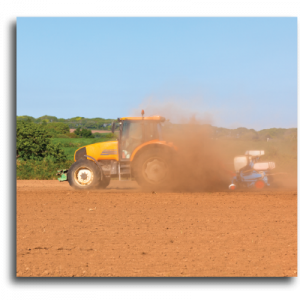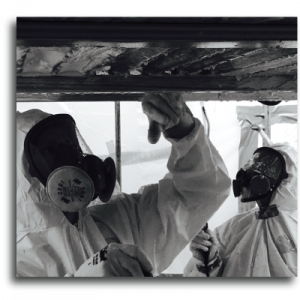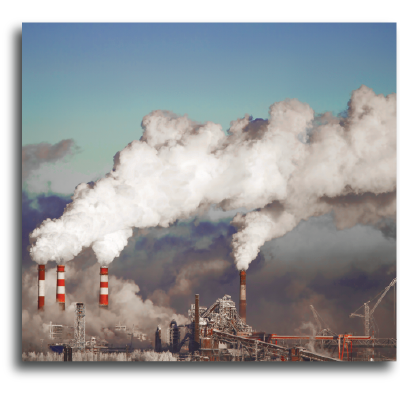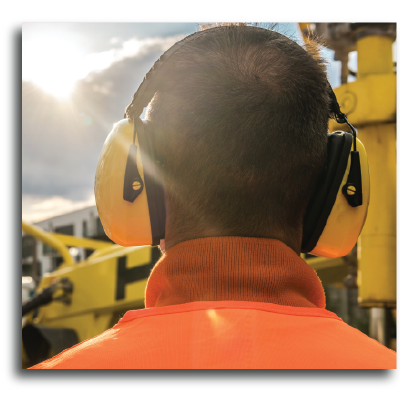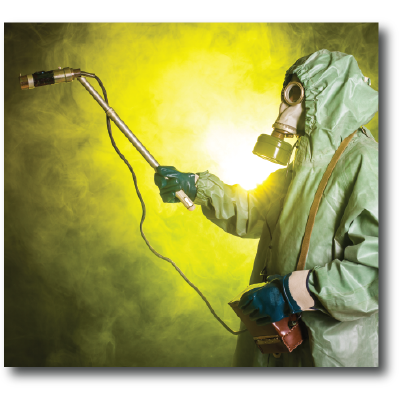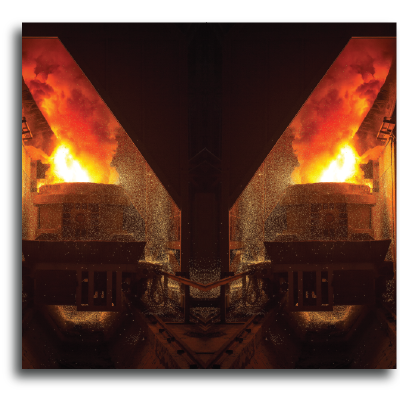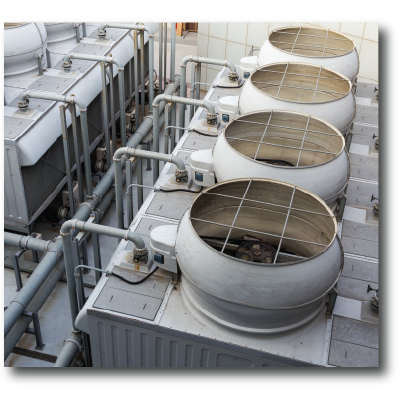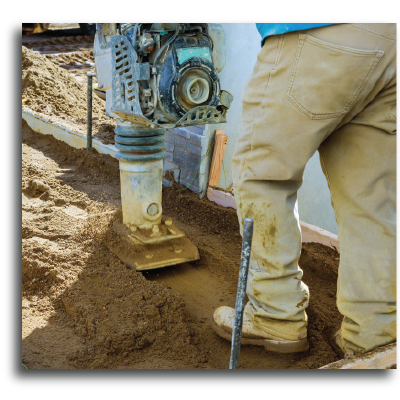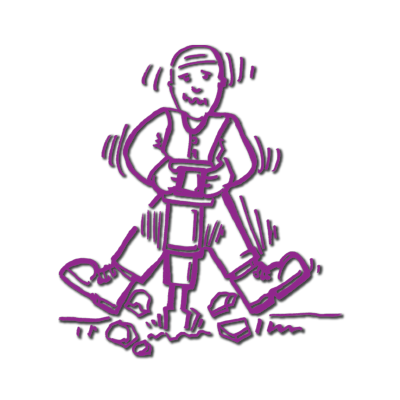Chemical Surveys
Organic compounds may be either fat or water-soluble and they may undergo bio-transformation in the body or circulate unchanged. Fat soluble organic compound tend to accumulate in organs rich in lipids while water soluble organic compounds enter the body water compartment and are widely distributed. All organic compounds are readily absorbed into the body through the lungs in their vapour phase. The fat-soluble organic compounds may also be absorbed through the skin.
Organic vapours which are not bio-transformed are excreted either in exhaled air or unchanged in the urine. Metabolites in urine from bio-transformed organic compound can also be used to monitor exposure.
Exposure to organic vapours may cause irritation of the eyes, nose and upper respiratory tract. In high concentrations, narcosis can be produced with symptoms of headache, nausea, light heatedness, vomiting, dizziness, lack of co-ordination and unconsciousness. Repeated or prolonged skin contact with fat-soluble organic compounds may cause drying and de-fatting of the skin which may lead to dermatitis.
Dust, Asbestos & Lead Surveys
Dust
The amount of material inhaled, its chemical composition and particulate size determine the potential health hazards associated with dust. The inhalation of sufficient quantities of dust, regardless of its chemical composition or size, can cause discomfort and unpleasantness. Depending upon the chemical composition, the dust can also cause physical irritation to the respiratory tract or skin, or a chemical action damaging vital internal tissues of the lungs.
Asbestos
Asbestos is a naturally occurring fibrous mineral that is widely distributed in rock outcrops and deposits throughout the world. Asbestos minerals have been exploited commercially for their useful properties of flexibility, high tensile strength, incombustibility, low thermal conductivity and resistance to chemical attack.
Three types of asbestos are mined in South Africa chrysotile (white), amphiboles crocidolite (blue) and amosite (brown).
Inhalation of asbestos fibres can eventually lead to a number of diseases, including asbestosis, lung cancer and mesothelioma. Repeated low-level exposure may lead to asbestosis related diseases. There is a long delay (latent period) between initial exposure to asbestos and the first symptoms of disease, it can vary from 15 to 60 years.
Lead
Lead is a toxic metal that is also used in burning fossil fuels. It can be combined with other metals to produce alloys. Lead and lead alloys are often used to make batteries, ammunition, and other metal products. Years ago, lead was also used regularly in paint, ceramics, caulk, and pipe solder among other things. Because of its potential health problems, the amount of lead used in these products today has lessened or has been removed.
Though used less often, lead is still common in many industries, including construction, mining, and manufacturing. In each of these industries, workers are at risk of being exposed to lead, by breathing it in, ingesting it, or coming in contact with it.
Ergonomic Surveys
Ergonomics involves the relationship of man with machine by designing the work environment to suit the physical and mental characteristics.
Ergonomics enables the design of jobs that not only increase a worker’s skills and productivity, but also safeguard overexertion and stress.
NEHC can evaluate work environments for ergonomic stresses and recommend remedial action for the identification problems
Evaluation of Engineering Control Measures
The evaluation of controls in respect of their effectiveness is an area that is often neglected and is taken for granted that the workers are protected.
The Regulations for Hazardous Chemical Substances requires that all engineering controls be checked at 24 monthly intervals by an approved inspection authority. This examination should demonstrate if the engineering controls are functioning as originally designed and that the health of the workers is being protected by such installations.
NEHC offers this service which will provide information on the performance of installation as well as the effectiveness of the control.
Illumination Surveys
Good lighting satisfies three functions namely:
• It causes safety.
• It facilitates performance of tasks.
• It creates a suitable visual environment
The consequences of poor lighting are much more than just visual fatigue or discomfort. Inadequate lighting can cause many kinds of accidents at work due to the failure to understand what is seen. Inadequate lighting will further impact on production, quality and efficiency. The Regulations relating to Illumination specify minimum lux levels for various workplaces. Use of a recognized standard, suitable instrumentation and adequate number of measurements all form part of the survey in order to evaluate against the prescribed illumination standards.
Monitoring of Air Born Contaminants
Our organization is capable of evaluating the various chemical stress factors (i.e. dust, gasses, vapours and mist) in accordance with recognized international methods.
The evaluation of air contaminant levels should be performed where potential exposure to airborne pollutants may occur.
The number of measurements required is prescribed by legislation, this is determined by the chemical substance, the number of workers exposed and their duration of exposure.
Full reports covering methodology, results and recommendations are submitted on completion of the work. Our organization is also approved in terms of lead and asbestos monitoring. Services in respect of respiratory protection are offered as part of the airborne contaminant services. The respiratory protection program covers the selection of respiratory protection devices, training of employees in the correct usage, maintenance of these devices, medical examinations and surveillance of the workplace air.
Noise Surveys
The criteria for reducing the risk of hearing damage is based on limiting the maximum exposure to an “Equivalent Continuous Sound Level” (Leq) of less than 85 dB(A) for an eight-hour period. Noise is measured decibels. A single value, the A-weighted sound level in decibel (dBA) is used to evaluate hearing damage risk.
Radiation Surveys
Radiation surveys are performed in areas where radioactive materials or radiation-producing machines are used to ensure that radioactive contamination and/ or exposure levels are as low as reasonably achievable. Instruments such as a Geiger-Mueller counter Scintillation counter and are used to detect exposure levels from either removable or fixed sources.
There are three types of routine surveys:
⦁ Ambient Radiation Survey- An ambient radiation survey is required when gamma-emitting radionuclides are used or stored. Such isotopes include Co-57, Co-60, Tc-99m, I-125, I-131, Cs-137, Tl-201, etc. A survey must be performed with an ionization chamber-type instrument. Examples include Ludlum Model 9 and a Fluke Model 451P.
⦁ Survey for Surface Contamination- Work areas, including bench tops, cabinets, storage areas, floors, etc must be surveyed daily for contamination. Surveyed should be performed with meters appropriate to the types of radionuclides used in the area. For example, a GM pancake detector is useful for detecting beta-emitting isotopes such as P-32, Y-90, and I-131; a NaI(Tl) detector should be used for gamma-emitting isotopes such as Co-57, Tc-99m, I-125, Tl-201.
⦁ Survey for Removable Contamination (Wipe test)- A wipe test survey is performed by swabbing a potentially contaminated surface with a media capable of absorbing radioactivity. “Q-tips”, alcohol swabs and filter paper are all suitable media for a wipe test survey after wipe test, wipes must be counted in a detection system capable of detecting radioactivity at levels below 200dpm. A sodium iodide well counter or liquid scintillation counter typically offers an appropriate level of sensitivity.
Thermal Stress Surveys
Temperature extremes cover both heat and cold stress. Thermal stress limits have been prescribed in the Environmental Legislations. NEHC is capable of performing thermal stress surveys where extremes of temperature appear to be a problem.
The Wet Bulb Globe Temperature (WBGT) index is used as the indicator of elevated temperatures.
Thermal stress surveys will also consider the metabolic demands of the tasks, duration of exposure, clothing worn and other relevant factors as part of the evaluation.
Ventilation Surveys
An employer shall ensure that every work place in his undertaking is ventilated either by natural or mechanical means in such a way that:
⦁ The air breathed by employees does not endanger their safety;
⦁ The time-weighted average concentration of carbon dioxide therein, taken over an eight-hour period, does not exceed one half percent by volume of air;
⦁ The carbon dioxide content thereof does not at any time exceed three percent by volume of air;
⦁ The prescribed exposure limits for airborne substances therein are not exceeded; and the concentration therein of any explosive or flammable gas, vapour or dust does not exceed the lower explosive limit of that gas, vapour or dust
Vibration Surveys
Employee exposure to vibration occurs in many work settings. Human vibration generally falls into two categories, namely, whole body vibration and hand arm vibration.
Whole body vibration occurs when transmission of vibration takes place through a broad body contact area. such vibration may be transmitted through the feet, buttocks or the whole body. Sources of whole body vibration include:
⦁ heavy construction
⦁ forklifts
⦁ vehicles and
⦁ farming
Negative health effects associated with whole body vibration include:
⦁ fatigue
⦁ lower back pain
⦁ vision problems
⦁ interference with or irritation of the lungs, abdomen, or bladder and adverse health effects to the digestive, genital / urinary and female reproductive systems.
Hand arm vibration occurs when vibration is transmitted to the hand and arm when hand held power tools and hand guided equipment are used. It may also occur when holding materials being processed by machines.
It is therefore, essential that vibration exposure assessments are made. This includes assessment of effects on whole body and hand arm vibration, from use of heavy machinery and equipment. It can be achieved with the use of human vibration meters. The aim should be to eliminate or minimize employee exposure to vibration.
Volatile Organic Surveys
Vapours are derived from volatile liquids which may condense at room temperature at high concentrations and an aerosol (particulate) form may coexist with a vapour. However, unless an aerosol is produced example as in a spray operations, atmospheric concentrations of vapour pollutants rarely reach saturation conditions except in enclosed spaces.


